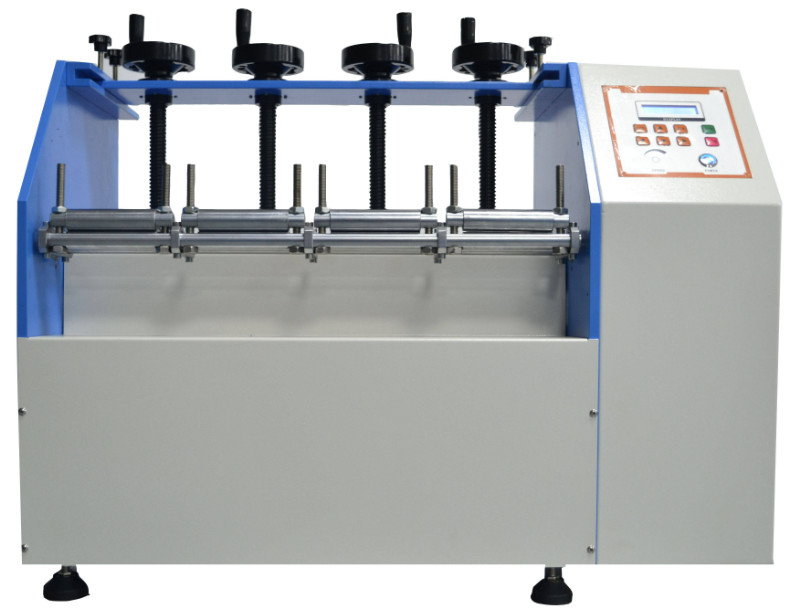
NewsInformation Center
11 ways to operate the shoe sole bending tester
2023/02/06
This tester is used to test the bending of rubber soles, PU and other materials after a 90° bending test to observe the degree of damage and cracking in order to judge the merits of the material.
11 methods of operation of the shoe sole folding resistance tester.
1. Check the sample. If there is debris on the surface, wipe it with a gauze dipped in alcohol.
2、Assemble the sample with a collapsible test last of appropriate size. The last is normally 5mm smaller than the shoe size.

3、Clamp the sample in the fixture of the bending tester, with the toe flexion part of the sole surface of the shoe coinciding with the axis of the movable axis of the fixture (if there is a cut, the cut part should be on this axis).
4、Adjust the eccentric distance of the tester to make the bending angle reach the specified angle.
5, the tester will be placed in zui small flexural angle state, observe the heel position, so that the specimen is in a natural state, not bending in any direction, or adjust the angle of tilt of the fixture so that it is in a natural state, and then adjust the flexural angle.
6、Put the tester in the zui large flexion angle state, cut a 5mm long incision in the middle of the toe flexion part of the shoe sole surface, cut through the shoe sole.
7, clear the tester counter, the number of bending and bending frequency preset to the specified value, start the blower after starting the mainframe.
8, the test machine running process, observe the clamping of the specimen. If there is loose or bending position changes, should promptly stop and adjust.
9, the testing machine according to the preset number of stops, measured with vernier calipers, visually inspect the changes in the specimen.
10、Put the tester in the zui large declination state and measure the length of the cut of the sole after expansion, as well as the length and number of new cracks.
11、Remove the sample from the holder, leave it in its natural state and observe the changes in the upper surface, the sole and the joint area of the sole (including the waistband and the sole wall).
The shoe sole bending resistance tester is suitable for testing the bending resistance of finished shoes and soles (pieces) at room temperature. The principle is to install the finished shoes or soles on the bending resistance tester, bend the test at a certain angle and frequency, and after a certain number of bending times, measure the crack (mouth) of the sole and rubber strip and the length of the rubber mouth, and observe the change of the sole.
Previous: How many types of Washing colour fastness tester are there for fabrics?
N e x t : What is the inspection basis for Chinese fabrics and textile products?



